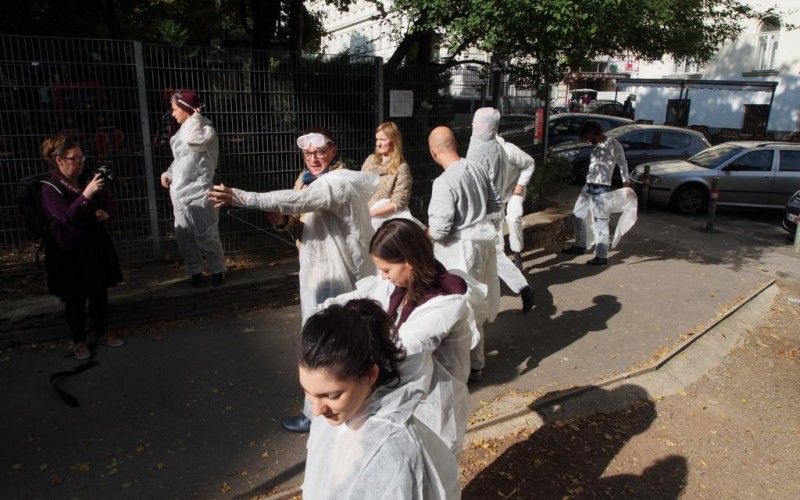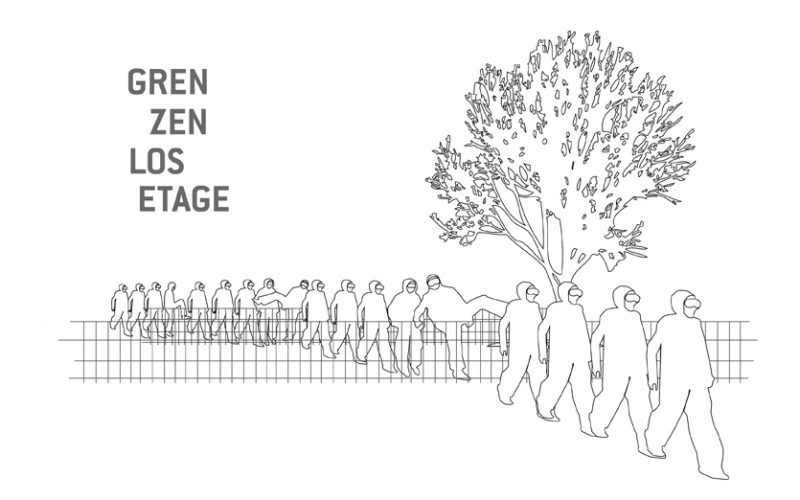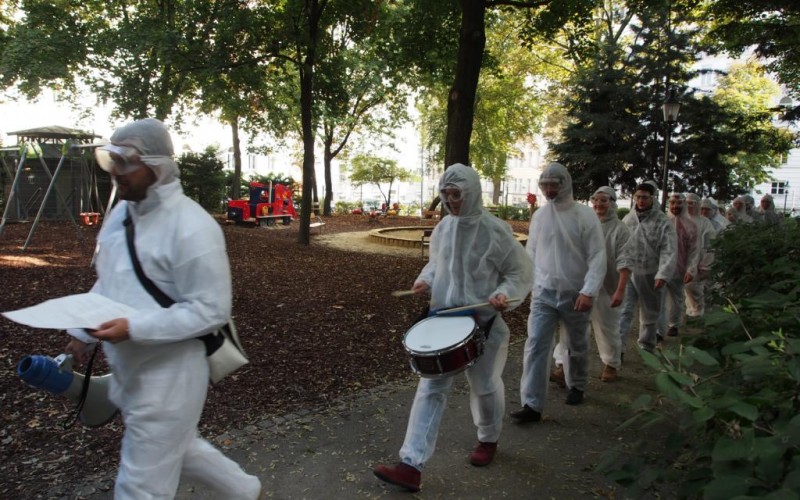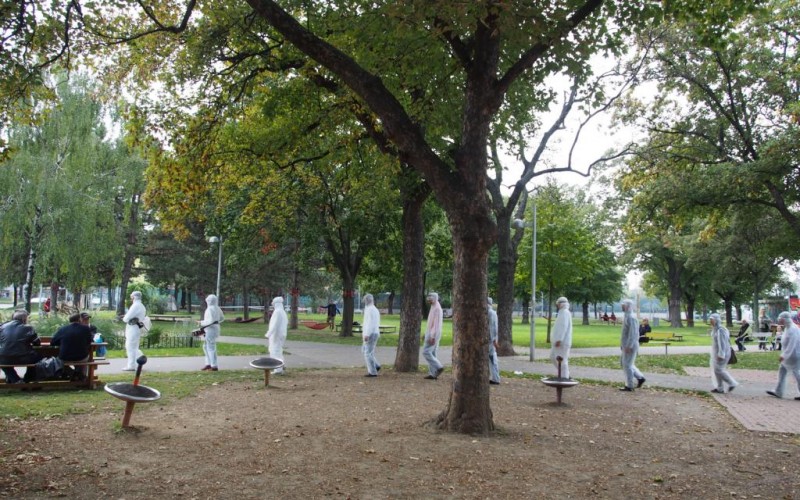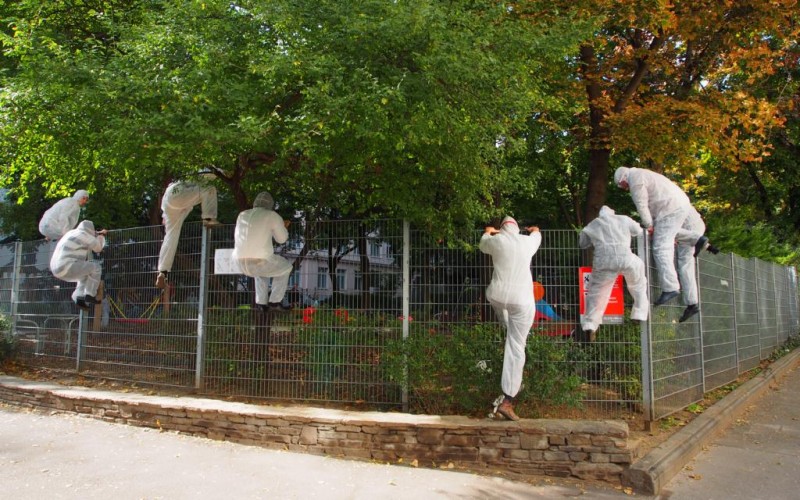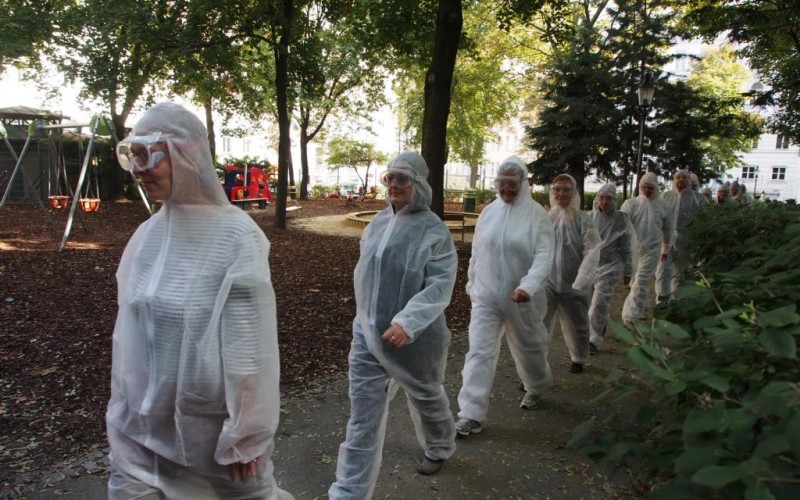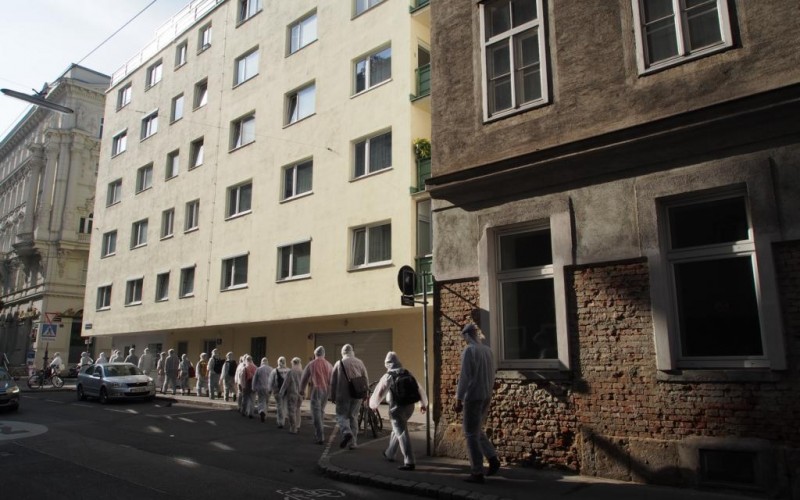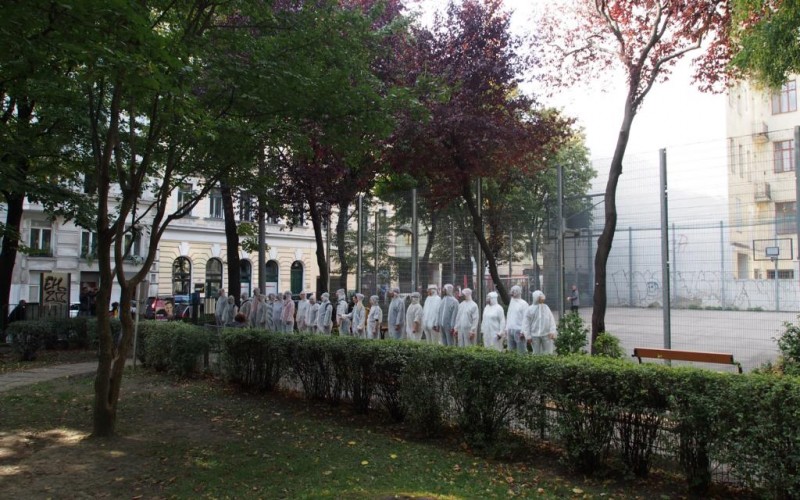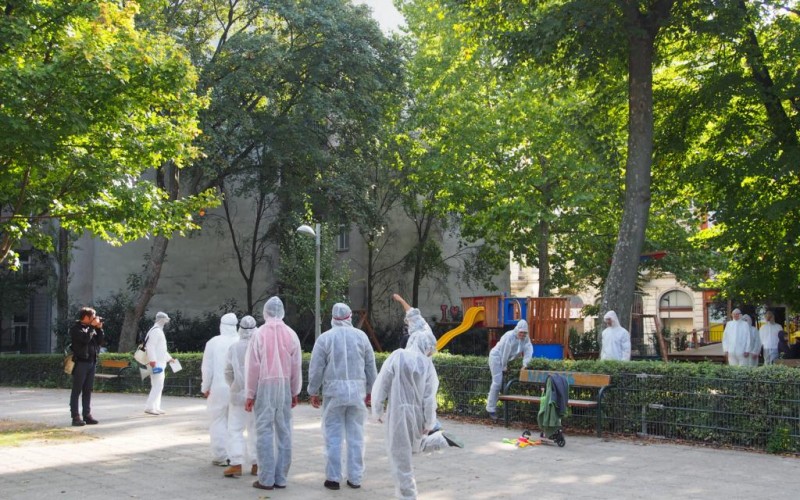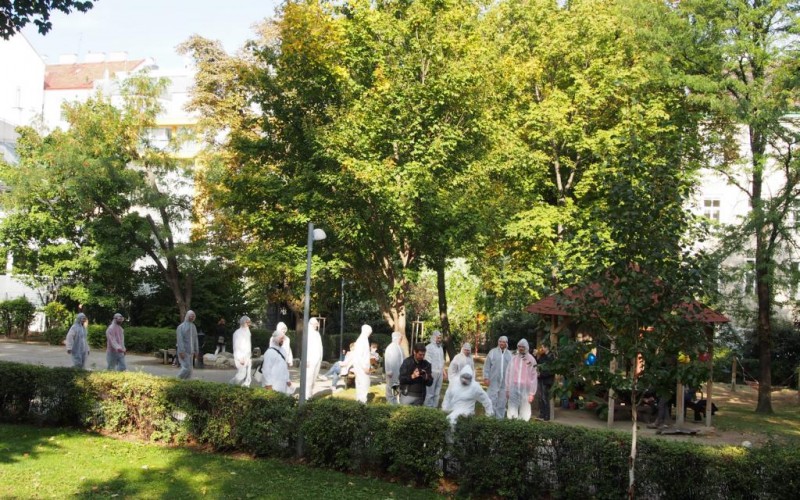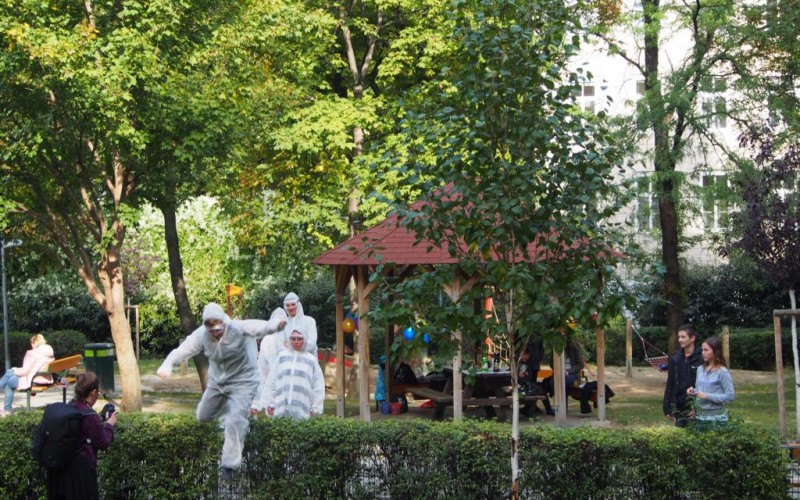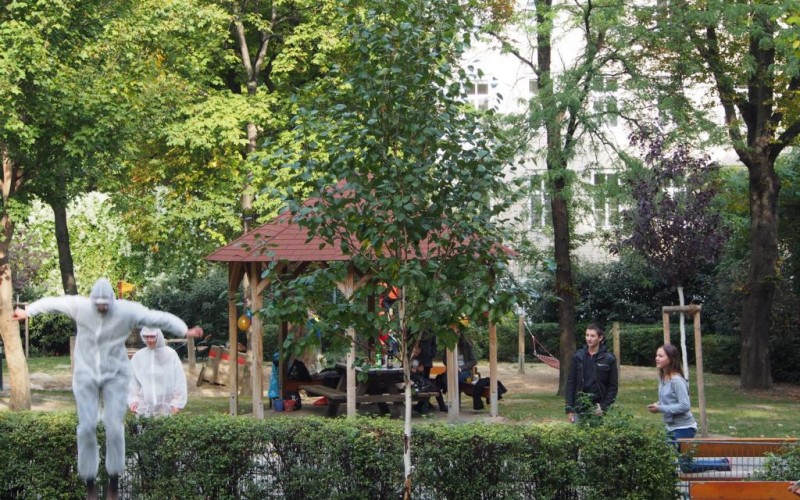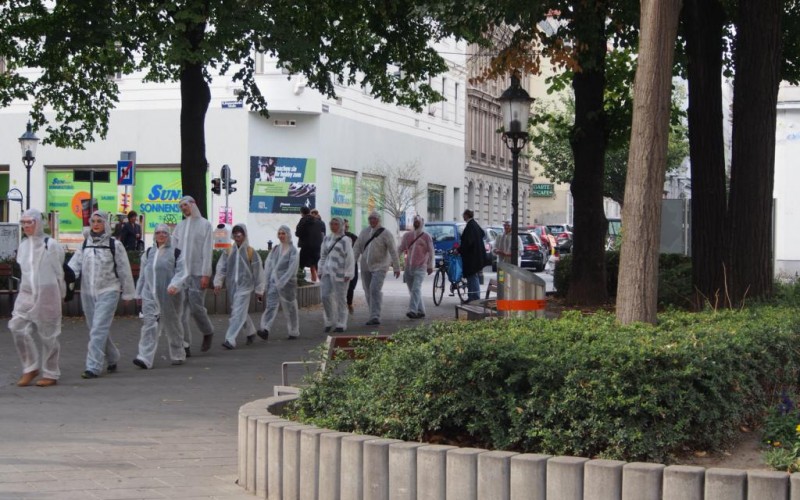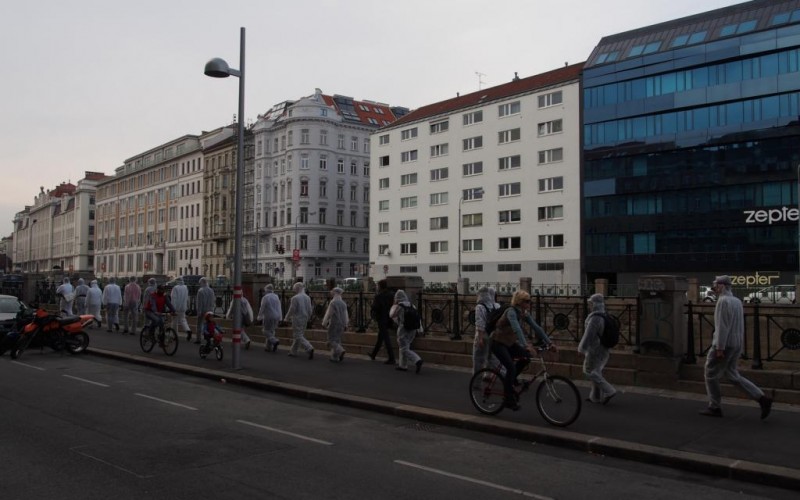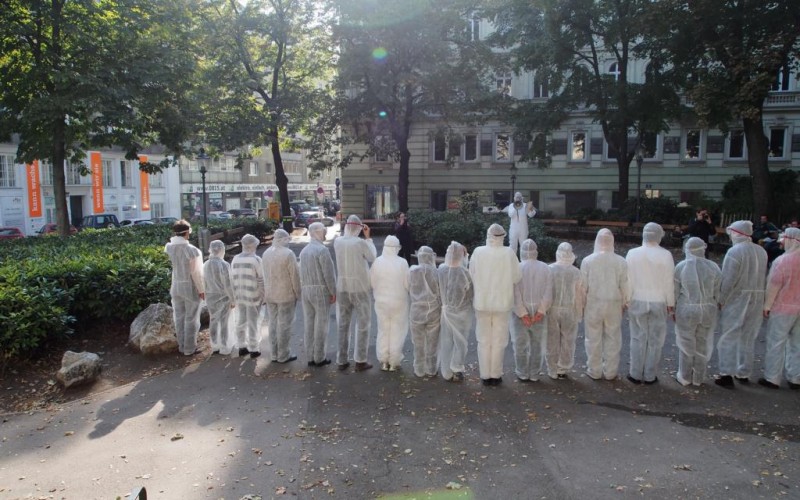Limitless Days
Have a look at this! There are too many lines being drawn and barriers erected – we will overcome them! Barriers don’t just mean fences, hedges and (noise protection) walls. Categorizations and rules are also barriers. So are exclusions and inclusions. Barriers don’t resolve conflicts; they displace them. Barriers divide: the space, the recreational area, the society, our activities. We exchange limited safety for an open view of the world. As part of our “boundless days” we will demonstrate barriers being overcome by sharing the boundaries – with you.
Yes to recreational space as a negotiated space!
Yes to expanding the space and making it permeable!
Yes to unlimited possibilities!
Yes to freedom!
Group hike performance: With support from our borderline genius partners in Switzerland, we will go beyond, climb over, jump across, slip round, push through limits.
Come and be part of our tours sans frontières!
Vienna, Urbanize Festival
4.10.2015
www.urbanize.at
- © Christian Maryška
- © Hannes Gröblacher
- © Christian Maryška
- © Christian Maryška
- Karoline Seywald, Hannes Grölbacher, Lilli Licka © Christian Maryška
- © Christian Maryška
- © Christian Maryška
- © Christian Maryška
- © Christian Maryška
- © Christian Maryška
- © Christian Maryška
- © Christian Maryška
- © Christian Maryška
- © Christian Maryška
- © Christian Maryška
© Manfred Schwaba
The public space is being divided up and portions are being assigned to different groups of people in order to protect them from one another and from other hazards. The liberality of the space gives way to safety concerns. Conflict and danger lurk everywhere. Danger from vehicles with reckless drivers, from walls and stairs where people can come a cropper, from dogs that bite and their leavings, which stink, from children playing with balls, and for children running into cars, dogs or walls, for caretakers, whose forecourts get dirty, for plants, which get trodden underfoot, for property, which gets destroyed, for property owners, who get disturbed, for rubbish, which gets riffled through, for schoolyards, which get played in, by teenagers, who get rambunctious. To counter these threats there is an omnipresent, built answer: the boundary or barrier.
Lines are being drawn, fences and railings erected, walls built. The physically visible barriers are accompanied by mental barriers, by social, cultural, and political barriers – both large and small. The design of our urban space follows the general tendency to seal oneself off, to not tolerate other people and other things, to stake special claims, and put conflicts in the hands of the authorities. Discussions are no longer necessary; everything can be put in its place.
In the public space, which should, according to Peter Marcuse, be available for public use, these boundaries appear in the form of railings. Lengths of fencing in public parks run for thousands of kilometres. Which means they have to be cheap, and they look that way too. They are replicated metre for metre, kilometre for kilometre, park for park.
Several points are important here:
• The urban space with its compact diversity stands for conflict and negotiation, without which, instead of lively heterogeneity, only homogeneity holds sway.
• The recreational space needs to be carefully designed; fences also play an active part in the design – it is thus not a matter of indifference whether they are there or how they look.
• A sense of openness can help expand the limited space of the city; movement must be possible; permeable access is necessary.

